In honor of Women’s History Month, here are intriguing stories about 10 of these public figures who have contributed to American history, culture and the presidency.
Some were quiet and demure, others bold and outspoken. Beside every president has been a first spouse — women only, so far — who commanded the attention of millions and initiated traditions that have shaped our culture.
Since 2000, the First Ladies National Historic Site in Canton, Ohio, has honored these women through a wealth of archived stories and artifacts — all in the home of the 25th first lady, Ida McKinley. The site is managed as a partnership between the National Park Service and National First Ladies Library.
While the role of first spouse has evolved, each woman has contributed to American history, culture and the presidency.
Based on Park Service information, here are compelling facts you may not know about 10 presidential spouses. They are listed with their years as first lady.
1. Dolley Madison
Dolley Madison (1809-17) first served as unofficial first lady to President Thomas Jefferson, a widower, while her husband, James Madison, served in Jefferson’s cabinet before becoming president himself.
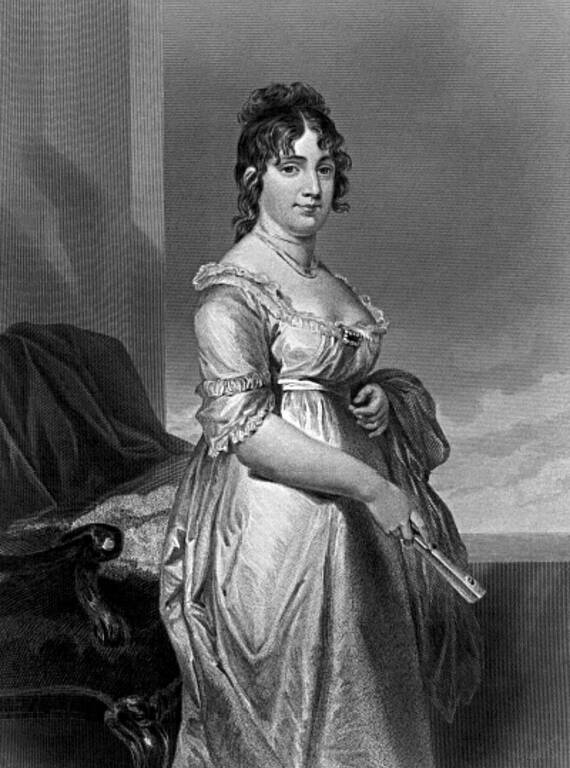
Dolley Madison
via Wikimedia CommonsKnown as an intelligent and gracious hostess, she helped define the role of first lady as a domestic diplomat.
She also is known for saving priceless White House artifacts before the building burned in 1814 at the hands of the British — among them, a full-length portrait of George Washington. She instructed an enslaved teenage boy to break the frame so the painting could be removed with a knife and taken to safe storage.
Washington’s portrait eventually returned to the White House and is the only item currently on display that was present when the house first opened in 1800.
2. Lucretia R. Garfield
Lucretia R. Garfield (1881) was scrubbing her kitchen floor in Mentor, Ohio, when her husband telegrammed from Chicago to share he had been selected as the Republican nominee for president. As a U.S. congressman’s wife, she was already familiar with politics and had been her husband’s sounding board, encourager and speech-writing assistant.
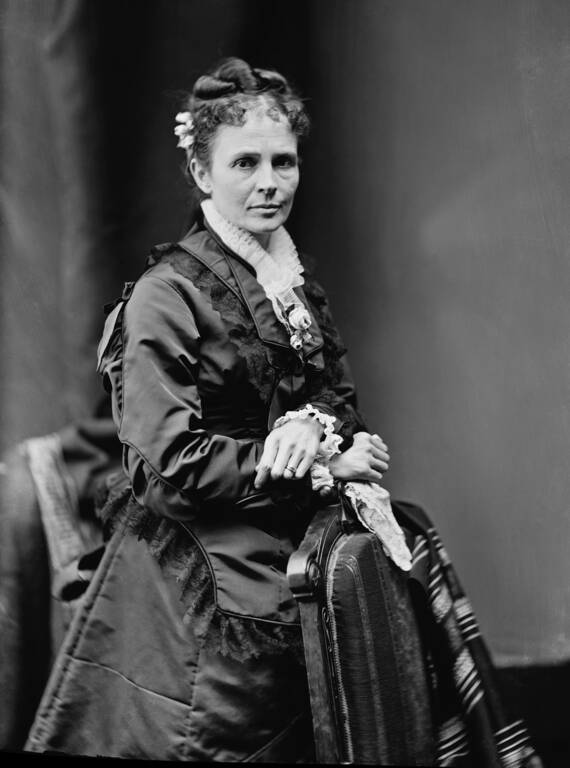
Lucretia Garfield
via Wikimedia CommonsHer husband won the November 1880 election, but her time as first lady was brief. After his March 1881 inauguration, she hosted several White House dinners, settled their children into school and began plans to renovate the 80-year-old Executive Mansion.
Then, in May 1881 while battling life-threatening malaria, she received word that her husband had been shot. Barely recovered herself, she spent the next 80 days caring for him. President James A. Garfield died after 200 days in office, and the first lady gained widespread admiration for her devotion and tireless nursing.
3. Ida McKinley
Ida McKinley (1897-1901) was highly educated for her time. She earned the equivalent of today’s Master of Fine Arts degree and as a young woman worked as manager at her father’s bank.
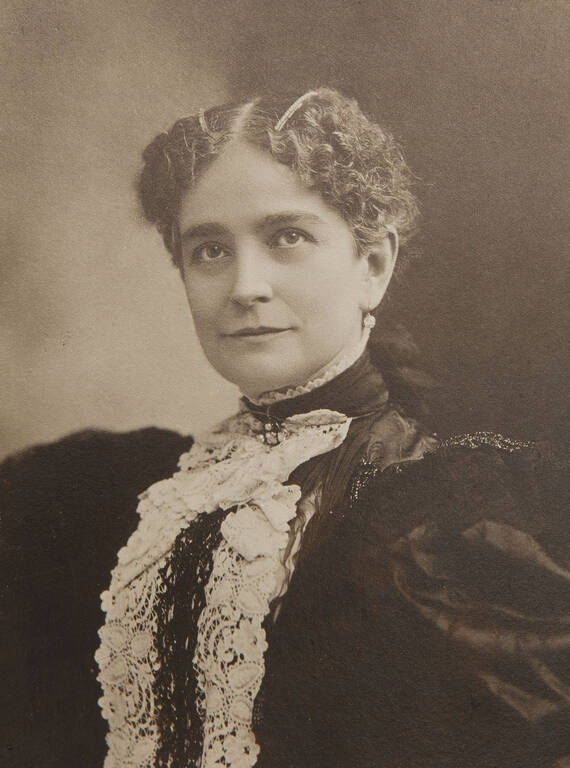
Ida McKinley
via Wikimedia CommonsThroughout President William McKinley’s political career, she made a habit of sitting outside his office and listening to his political meetings, later discussing them with him and offering insight and advice. A supporter of woman suffrage, she frequently exchanged letters with suffrage leader Susan B. Anthony.
After difficult pregnancies and the death of two children, she developed migraines and was thought to have epilepsy. Her poor health led her to play a reserved role as first lady. To avoid shaking hands with people at political events, she would hold a bouquet of flowers.
When she was unable to appear publicly, she crocheted slippers to be auctioned at charitable events or given to friends — more than 3,000 slippers over her lifetime.
4. Frances Cleveland
Frances Cleveland (1885-89, 1893-97) holds two records: She was the youngest first lady and the only one to get married inside the White House. She married 49-year-old President Grover Cleveland in the White House’s Blue Room at age 21.
Despite having a college degree, she shared her husband’s views that a woman’s place was in the home. As first lady, she took on the traditional role of hostess. Her White House biography says she held two receptions a week at the Executive Mansion — including one on Saturday afternoons when women with jobs could attend.
According to the Park Service, an area of leadership she felt comfortable with outside the home was the advancement of kindergartens in children’s education. Although she spoke out against women’s suffrage, she voted later in life after women were granted the right to vote.
5. Edith Kermit Carow Roosevelt
Edith Kermit Carow Roosevelt (1901-09) was President Theodore Roosevelt’s second wife.
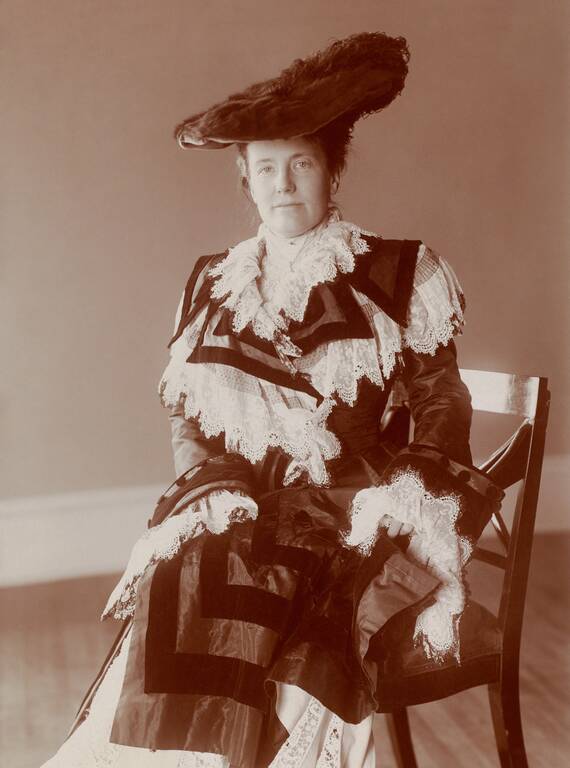
Edith Roosevelt
via Wikimedia CommonsThey had been neighbors and friends as children and reunited after the death of his first wife. While her husband held various public offices and was often apart from the family, she ran the household and managed finances while raising their six children.
As first lady, she expanded the West Wing of the White House and updated much of the furniture, which she financed with part of her husband’s salary. She continued to manage the family affairs so Roosevelt could fully focus on the presidency.
While remaining uninvolved publicly in political matters, she frequently advised her husband and was known as an excellent judge of character. The president claimed, “Whenever I go against her judgment, I regret it.”
6. Helen ‘Nellie’ Taft
Helen “Nellie” Taft (1909-13) held many firsts, among them the first to ride with her husband in the inaugural parade and the first to establish equal treatment of White House staff and entertain a wider scope of visitors. A graduate of Cincinnati College of Music, she also arranged White House concerts and dramatic performances.
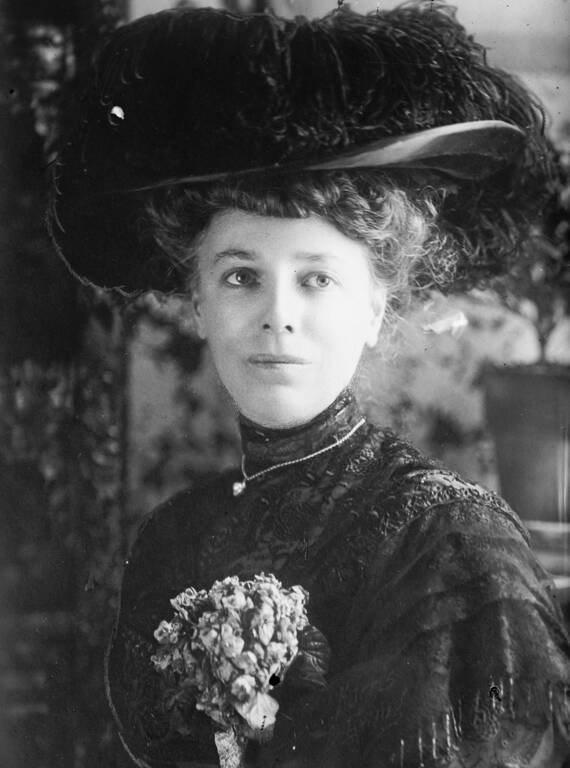
Nellie Taft
via Wikimedia CommonsIn 1912, she became the earliest first lady to initiate a federal act — Executive Order 1498, for health inspections of executive branch buildings to ensure sanitary and safe conditions for federal employees. That year, she also donated her inaugural gown to the Smithsonian Institution, the initial jewel in its popular first ladies exhibit.
Her legacy, however, may be best recognized in the cherry blossoms at Washington, D.C.’s Tidal Basin each April. Having lived in Japan with President William Howard Taft before his presidency, she joined the charge to beautify Potomac Park with Japanese flowering cherry trees. When Tokyo’s gift of 3,000 trees arrived in March 1912, she planted the first one. A stone and plaque mark the spot.
7. Lou Hoover
Lou Hoover (1929-33) was the first woman to graduate from Stanford University with a geology degree and was known for her analytical mind, independent spirit and advocacy of physical fitness for girls and women. She designed the Hoovers’ International Style home in California, now a National Historic Landmark.
She and her husband shared the belief in the equality of all people and the desire to help those in need, especially children. She was active in humanitarian causes and twice served as national president of the Girl Scouts, in the 1920s and again in the 1930s.
According to the Herbert Hoover Presidential Library and Museum, Lou Hoover was the earliest first lady to speak on the radio. She and her Girl Scouts leadership team are credited with approving a national plan to bake and sell cookies in support of scouting.
8. Mamie Eisenhower
Mamie Eisenhower (1953-61) was probably the best traveled of all presidential spouses by the time she became first lady. As an Army officer’s wife, she and Dwight D. Eisenhower had spent time on the East and West Coasts, the South and Midwest and traveled together to the Caribbean, Central America, South America, Asia and Europe.
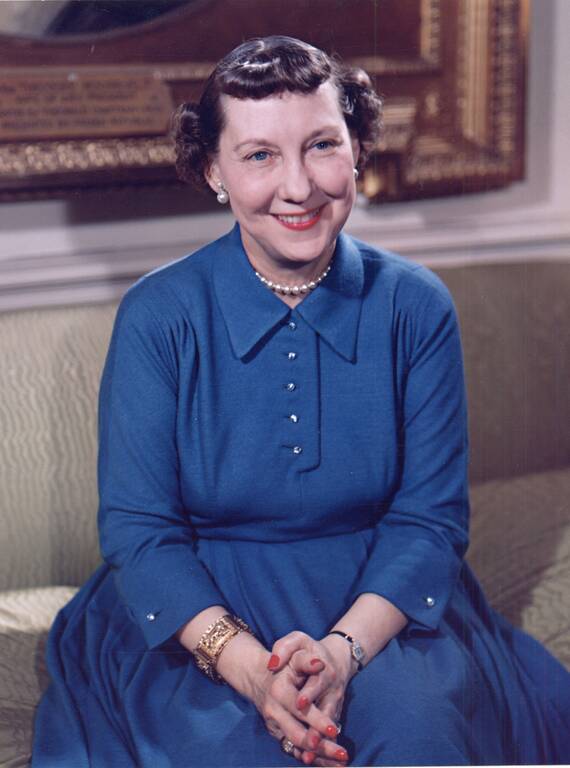
Mamie Eisenhower
via Wikimedia CommonsWith her finishing school background before marriage, she knew how to throw a good party — especially for senior officers and their wives — and create a welcoming, comfortable home within budget. This led to a smooth transition to the role of first lady.
As first lady, she represented the quintessential 1950s housewife, always looking stylish and sophisticated while keeping the household in order. “Ike was my career,” she would say. She typically styled her hair with bangs.
9. Rosalynn Carter
Already married for 30 years, Rosalynn Carter (1977-81) and Jimmy Carter shared a personal and political partnership when the Georgia governor became U.S. president. From early on in his political career, the Carters had made important political decisions together. A skilled speaker, she also was an active campaigner.
She was the first to have her own office and staff in the East Wing of the White House, after the White House Personnel Authorization Act of 1978 provided clarity on the first lady role and offered a budget. She also sat in during cabinet meetings and traveled with the president domestically and internationally.
She took strong interest in mental health reforms and became honorary chair for the President’s Commission on Mental Health. She testified before Congress in 1979 in support of the Mental Health Systems Act, which her husband signed into law a year later. Previously, Eleanor Roosevelt was the only first lady to testify before Congress.
10. Dr. Jill Biden
Dr. Jill Biden (since 2021) is the first spouse since Barbara Bush to hold the positions of both second lady and first lady, given that President Joe Biden served as vice president under President Barack Obama. She is also the first spouse since Pat Nixon to hold these roles non-consecutively.
A professor of English and writing at Northern Virginia Community College, she is the first wife of a sitting U.S. President to hold a paying job outside the White House. She earned her Doctor of Education degree while in her 50s.
According to her White House biography, she has continued championing as first lady the causes that previously defined her public life: supporting military families, advocating for increased educational opportunities and working to end cancer.
The only first lady with her own park site
The longest-serving and perhaps best-known presidential spouse is Eleanor Roosevelt, wife to Franklin D. Roosevelt, who served from 1933 to 1945. She is worthy of her own place in the National Park System: the Eleanor Roosevelt National Historic Site in New York.
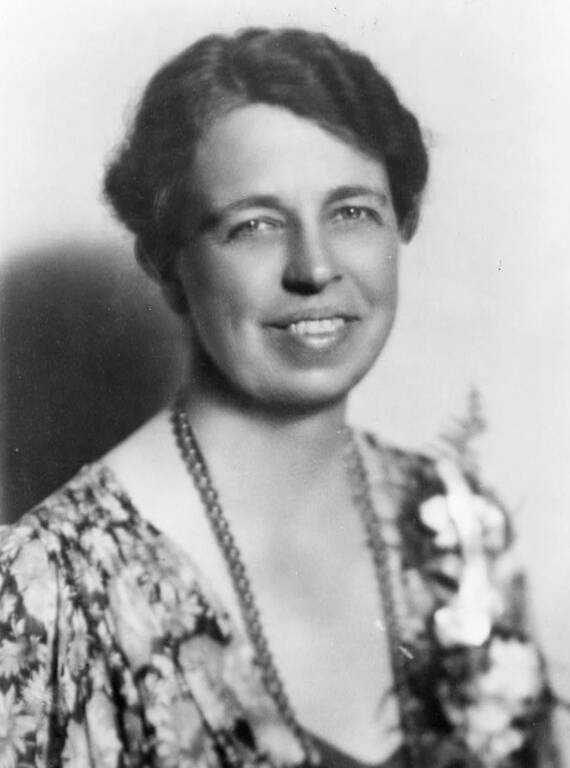
Eleanor Roosevelt
via Wikimedia CommonsShe is credited with transforming the role of first lady by holding press conferences, giving lectures and radio broadcasts, traveling cross-country and writing a daily syndicated newspaper column, “My Day” — all while maintaining an integrity and graciousness that endeared her to many.
Located in the Hudson Valley area, this national historic site includes Val-Kill Cottage where she lived for 17 years after her husband’s death in 1945. There, she maintained a politically active life, serving as American ambassador to the United Nations and chair of its Human Rights Commission. She also helped write the Universal Declaration of Human Rights.
Stay On Top of News
Our email newsletter shares the latest on parks.
About the author
-
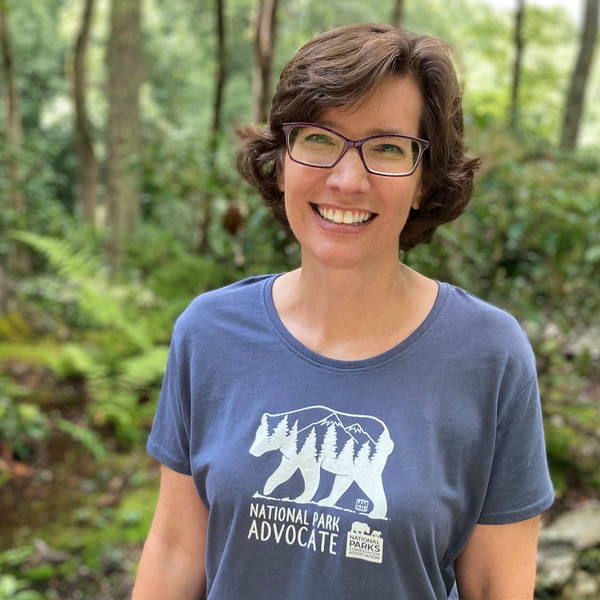 Linda Coutant Staff Writer
Linda Coutant Staff WriterAs staff writer on the Communications team, Linda Coutant manages the Park Advocate blog and coordinates the monthly Park Notes e-newsletter distributed to NPCA’s members and supporters.